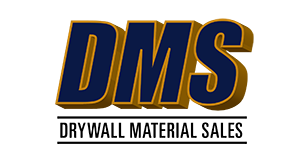You can find corner bead for nearly every wall design. From standard 90-degree corners to archways and edges that don’t turn corners at all.
The main categories include:
Metal Corner Bead
The most common and least expensive corner bead is galvanized metal. Easily applied with your choice of nails, screws, staples, compound or adhesive, it resists rust and stands up well to minor abuse once installed. However, the long strips can twist and bend during transportation if not carefully handled. It’s also the easiest product for inexperienced drywall installers to master.
Vinyl Corner Bead
Vinyl corner bead is the plastic version of metal and is less prone to transport damage. You can also install it with the same variety of techniques, although you may need a special compound/adhesive product if not using mechanical fasteners.
Drywall J-bead & L-bead
J and L bead is so named because of their cross-sectional profiles. If you look down the length of a piece, you see that the flanges take the shape of the letter for which it refers.
J-bead caps the edge of a sheet of wallboard where it does not terminate in a corner, such as around the inside of an attic access opening or where the drywall meets with a grid for acoustical panels.
L-bead, with one flange longer than the other, covers the drywall edge where it will meet a different material, such as a wooden window sill, fireplace masonry or a countertop.
Expansion Joints
Because gypsum board, like just about everything else, expands and contracts with heat and humidity, installers should leave slight gaps — about a quarter inch — every 30 feet at most. These gaps can be embedded with U or V-shaped vinyl or zinc strips that bend with the drywall movement, creating a professional finish.
Archway Corner Bead
Archway corner bead has the ability to flex to perfectly finish off archway corners. Made of vinyl, it’s easy to handle and apply with spray adhesive.
Bullnose Corner Bead
When your design calls for rounded corners rather than sharp angles, you need bullnose corner bead. It comes in a variety of radius profiles, so you can create arcs that range from subtle to architecturally striking.
Paper-faced Trim
For superior corner bead and trim that resist cracking and install quickly, you can choose paper-faced bead and trim. United States Gypsum (USG) laminates paper to galvanized metal so that your drywall compound readily adheres. The trim overcomes typical problems from building movement and settlement that can result in the trim pulling away and becoming visible.
With a large selection of corner beads and trims available, if you need help choosing which will fit your design and skill level best, please feel free to consult with our experienced, knowledgeable staff at DMS.

